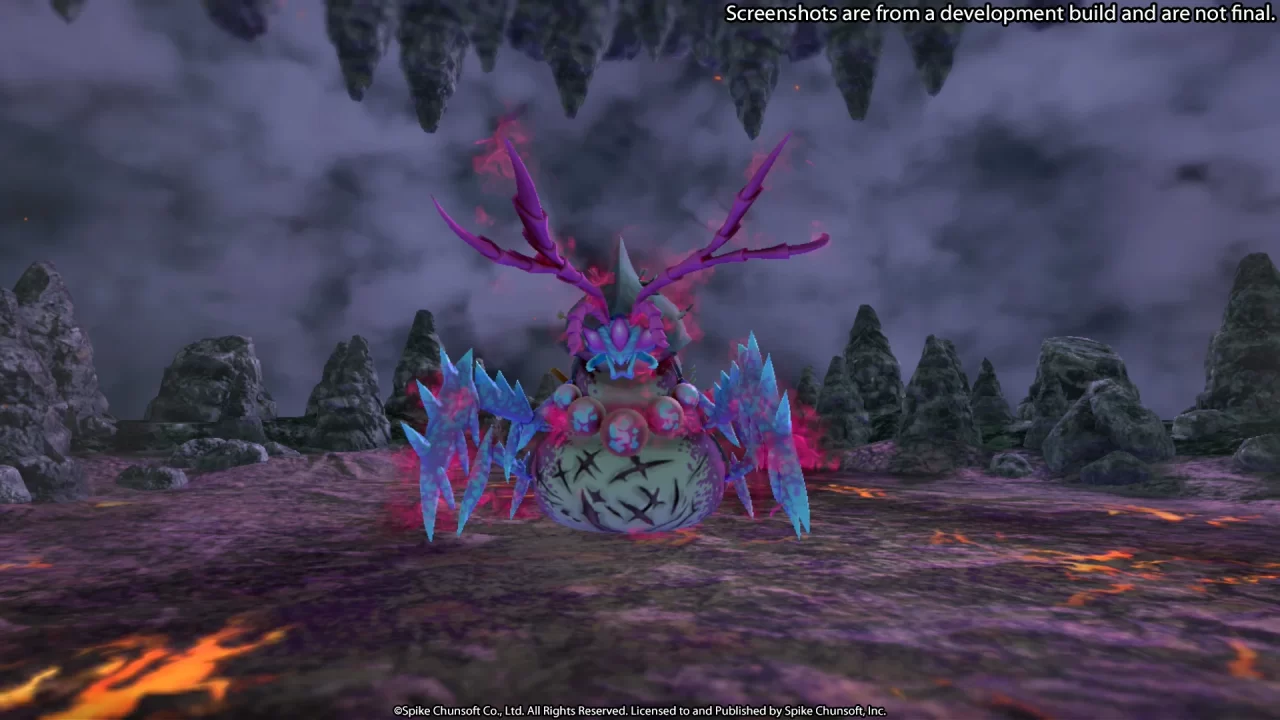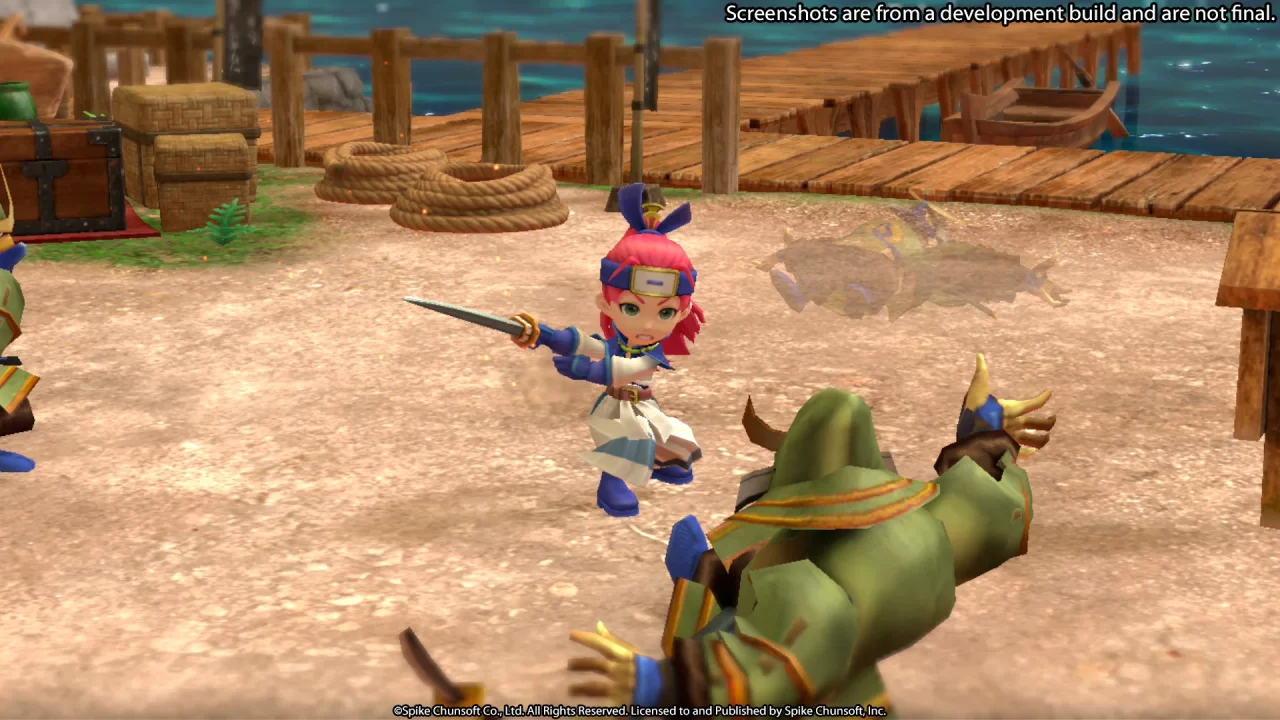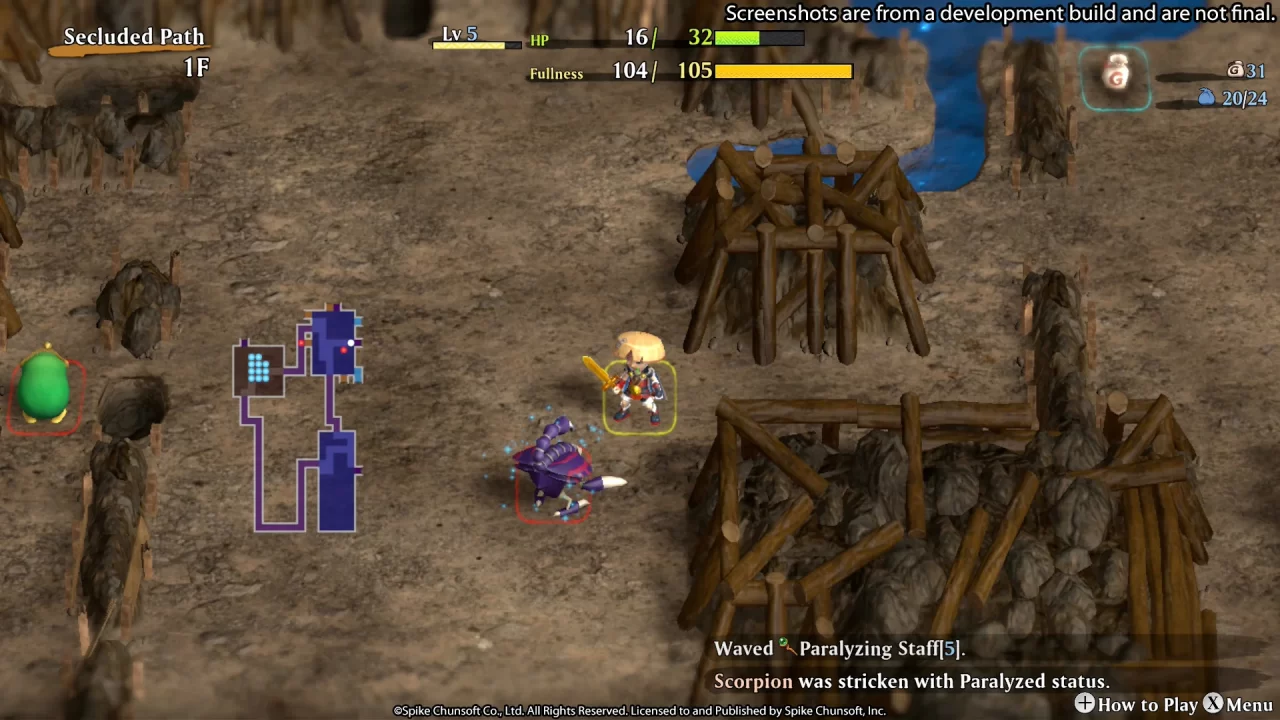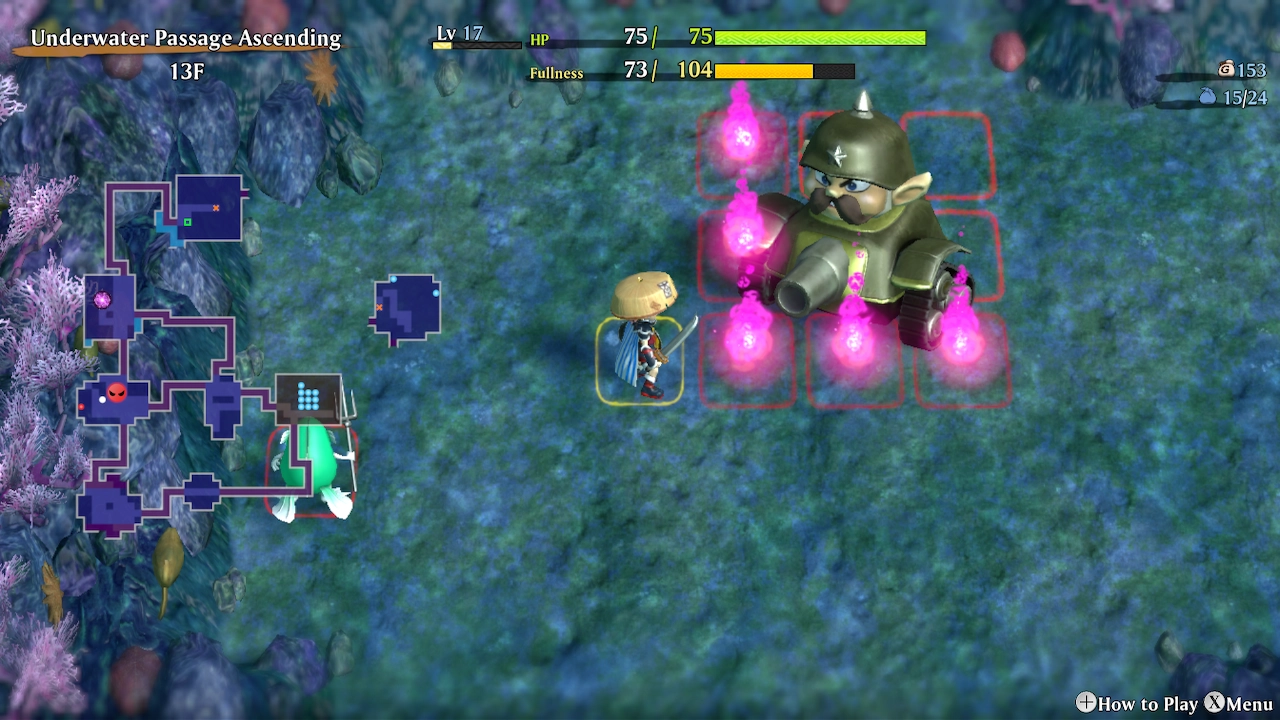If there is a single video game genre that has seen a massive explosion in popularity over the last decade, it’s roguelikes. Between the constant variety of procedurally generated levels, the addicting risk and reward gameplay loop, and meta progression across multiple runs, these elements have come to define many new titles. While many current roguelike (or roguelite) games could only loosely be considered RPGs, the genre’s roots lie in turn-based dungeon crawlers. Although the series has been dormant for nearly a decade, Spike Chunsoft’s Shiren the Wanderer series is foundational to the roguelike subgenre. Shiren the Wanderer: The Mystery Dungeon of Serpentcoil Island marks the long-awaited sixth entry and triumphant return of the acclaimed series that takes a back-to-basics approach most similar to the original Shiren the Wanderer on the Super Famicom. The Mystery Dungeon of Serpentcoil Island — which I will sometimes shorten to “Shiren 6” — distills the turn-based roguelike experience down to its core and adds a host of quality of life improvements, making it the ideal way to experience the Shiren series for both veterans and newcomers alike.
Shiren 6 sees our titular hero, Shiren, and his talking weasel companion, Koppa, traveling to the fabled Serpentcoil Island in search of treasure. The land is currently experiencing a severe drought, yet the island and its inhabitants have somehow been spared. Due to this strange occurrence, rumors of treasure and riches have spread throughout the land, causing all manner of ronin, wanderers, and pirates to visit the island. When Shiren arrives, he has a vision of a girl compelling him to travel to the top of the mountain at the center of the islands. Once at the top, he finds the terrible monster Jakaku and realizes the young girl is trapped inside the beast. A swarm of monsters and Jakaku defeat Shiren, sending him back to the initial village. Your goal is to re-attempt this journey over and over until you can defeat Jakaku and save the girl. It’s a simple premise, but one that provides sufficient motivation for your repeated dungeon crawls.
As you progress further into the main story dungeon, you slowly learn more about the island and its inhabitants, and with them, additional mechanics, shortcuts, and dungeons will open up. One of the major strengths of Shiren 6 compared to previous entries is how it weaves story content with dungeon exploration. The main story is relatively simple and concludes after defeating Jakaku and conquering the initial story dungeon, but after the credits roll, the true game begins. There are two additional story dungeons to play through that explore the mysterious drought affecting the land and warring gods, each with their own unique aesthetics and gameplay modifiers.
After every few floors of the main dungeon, there will be a pit stop along Shiren’s journey, usually a small settlement or other point of interest. These locations may offer critical services such as a blacksmith to upgrade weapons or a shop where you can buy and sell items. But more importantly, they are filled with the game’s cast of characters. A hidden ninja village has a touching tale about a young woman learning to lead her clan of ninja outcasts and protect them from harm. Two rival pirate gangs have a Romeo & Juliet-style love story where Shiren can help a young couple come together. Fan favorite companion Asuka returns in a humorous side story about the mystical peach bun staff. Each of these side stories are fun diversions on their own, but completing them also unlocks several important mechanics for dungeon crawling. Shiren isn’t a narrative-focused series by any means, but the light sprinkling of story justification and character moments throughout the main dungeon and the post-game content gave me just that extra bit of motivation to see each dungeon and sidequest through to the end and put a smile on my face.
The beauty of the Shiren the Wanderer series lies in how much complexity and variety it wrestles out of its relatively simple core gameplay mechanics. All dungeon actions are turn-based, and enemies take their turns as you do. Everything moves at a snappy pace, but you can always take as much time as you need to consider your next action. This is important, as a single mistake can cause an end to your run and cost you your entire inventory of items, forced back to the starting area at level one to try it all over again. Many of the later entries in the Shiren series introduced ways to mitigate this; escape scrolls or undo grass could be used to teleport out of the dungeon at the first sign of danger, inventory intact. Others featured a tagging system, where you could pay money to a shop to tag your items, ensuring that those tagged items would be there even if you died inside a dungeon.
The Mystery Dungeon of Serpentcoil Island does away with all these features, making it much more difficult to amass a stable of powerful equipment to brute force the initial story dungeon. Instead, Shiren 6 demands that you learn the ins and outs of the item system and enemy behavior, ensuring that you master the mechanics of the game to conquer the main story dungeon. I loved this approach as it forced me to pay more careful attention to each action I took in a dungeon, especially in dangerous situations. To compensate for this new approach, Spike Chunsoft altered a few things in the player’s favor. Health regeneration occurs much faster than in prior games, making running away from a fight a much more viable option now. You can now equip multiple bracelets as long as you have gained ten strength, granting quicker and more open access to some powerful equipment setups.
Facilities like the bank, storehouse, synthesize, and item rune removal are held back until you complete the initial story dungeon, easing new players into these mechanics rather than overwhelming them all at once with a host of features they don’t understand. One of the best additions is the revamped notes system, which includes detailed breakdowns of every monster and item you have seen. You can reference this log at any time to refresh yourself on enemy abilities or item properties to avoid making careless mistakes or wasting a powerful item, something I found immensely valuable even as an experienced player. Smaller quality of life features introduced here include the map showing each floor tile you’ve traveled to help with identifying trap locations, the ability to assign four different projectiles to the left trigger for quick access, and the new Handy Dash that automatically navigates corridors and corners for you if you hold down the right trigger. These little touches make Shiren the Wanderer: The Mystery Dungeon of Serpentcoil Island the most approachable in the series while preserving the core elements and challenges that give the series its identity.
The most significant new features added are the Behemoth Gates and Sacred Items. Behemoth Gates seem intended to replace the day and night cycle from the fifth mainline title, Shiren the Wanderer: The Tower of Fortune and the Dice of Fate (where more powerful monsters appeared at night that require special abilities to defeat), and are a mixed bag in much the same way. Behemoth Gates will randomly appear on particular dungeon floors and repeatedly spawn giant monsters that take up a three-by-three grid on the map and cannot be defeated through normal means. While this breaks up the pace of normal gameplay, eventually, they begin to feel like more of an annoyance than an exciting challenge, especially when you figure out how to defeat them. However, a post-game dungeon uses them to great effect for a sort of stealth mission approach, which nearly justifies their inclusion.
Sacred Items, on the other hand, are a genius inclusion. Shiren 5 had a system where equipment slowly gained experience and grew stronger the more you used it. Shiren 6 replaces this system with Sacred Items, items with randomly assigned modifiers that make them much stronger than standard equipment. Sacred Items glow blue or yellow, and certain modifiers can only be found on these items. Since The Mystery Dungeon of Serpentcoil Island limits your ability to amass a stockpile of weapons between runs, I found that this system works well and fits the spirit of randomness in the roguelike genre much better than the weapon experience system. Finding a Sacred Item is always a welcome surprise, and making it through the dungeon with one is far more rewarding (and losing one more devastating) than slowly upgrading the same set of gear run after run.
I loved every second I spent delving deep into the dungeon floors of Serpentcoil Island. The new approach to narrative combined with the classic emphasis on game knowledge developed across multiple runs and risk/reward mechanics breathe new life into the series. The change to the visual style remains as charming as past entries despite the shift to 3D. The soundtrack is particularly noteworthy, as it is the series debut of Pokemon Mystery Dungeon composer Keisuke Ito. His tracks have so much energy to them, yet retain the traditional Japanese instrumental sound. There are a whole host of post-game dungeons I have yet to conquer, each with a unique gimmick that makes every run feel fresh and exciting. The ultimate 99-floor dungeon is particularly challenging this time and may take me months to finally clear. Shiren the Wanderer: The Mystery Dungeon of Serpentcoil Island is the best way for new players to begin the journey and features enough devilishly challenging content to keep returning fans occupied for a long time.







